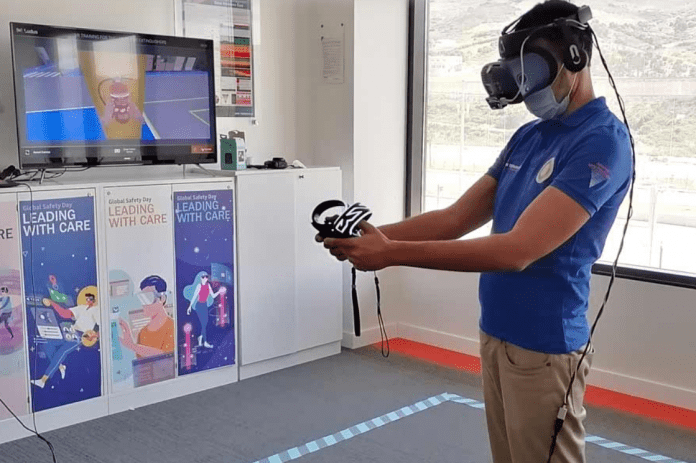After APM Terminals MedPort Tangier in Morocco begun incorporating Virtual Reality (VR) technology into safety training in 2020, now training modules cover around 14 safety topics and provide training allowing individuals to feel near-real-life scenarios.
The safety scenarios cover APM Terminals ‘Fatal 5’ areas of risk that contribute to the majority of incidents in a terminal, such as working at height or suspended loads, cover fire, first aid, and personal protection equipment, without putting participants in danger.
Health, Safety, Security and Environment (HSSE) Manager at APM Terminals MedPort Tangier, Ahmed El Amrani, pointed out the benefits of virtual reality training, saying that it does not only increase engagement for safety training and appeals to a broader audience, but it also enhances the effectiveness of critical safety training and improves safety behavioural attitudes.
“VT enables trainers to put employees in simulated scenarios that would simply not be possible in real life and gives them a much more valuable ‘real context’ of when they might face dangerous situations,” explained Amrani.
Furthermore, virtual reality training is more cost-effective than classroom-based one, while its software evaluates participants, monitoring their performance on an individual basis and adjusting the training experience and difficulty level based on the participants need, from junior to expert.
Amrani explained that before the port embraced the VR training system, it carried out a study to test how it would match up to more traditional methods of training, which measured VR training against a number of attributes, such as the commitment of the personnel in matters of health and safety at work, reduction in training costs, and overall effectiveness.
When participants were asked to rank their attitude towards safety, VR training scored 54 percentage points higher than classroom-based training.







